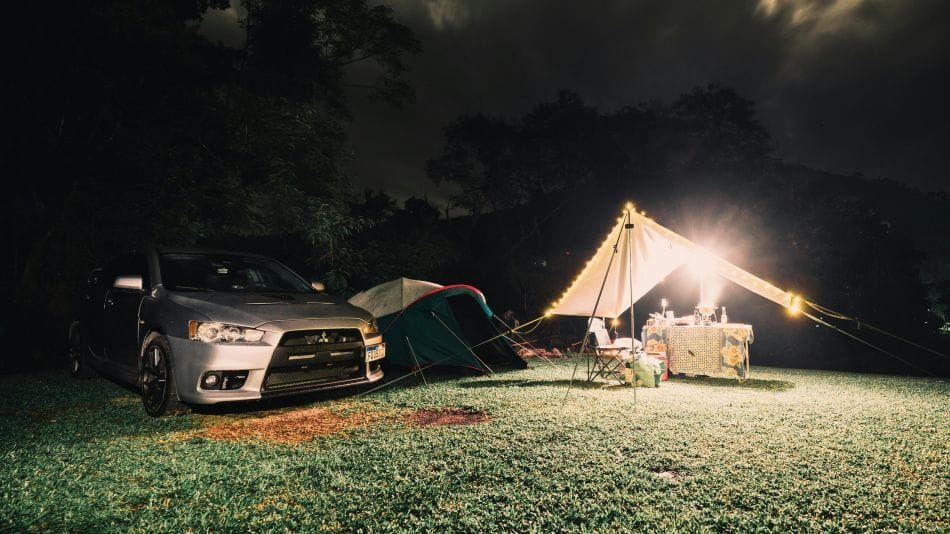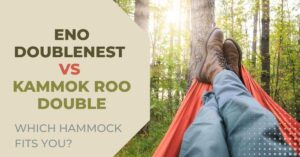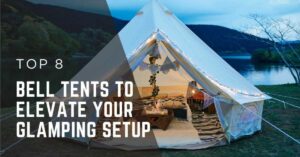Why You Should Choose Dimmer Lanterns for Camp Lighting
Want to turn a functional campsite into a cozy, flexible outdoor living room? We reach for dimmer, rechargeable lanterns because they give us control. Adjustable light levels let you brighten tasks or soften the mood. Rechargeable batteries save weight and allow us to stay out longer.
In this guide, we share hands-on advice from our camps: how to choose the right lantern, plan placement and layering, manage brightness and battery life, and care for gear in the field. We also cover diffusers, color tweaks, and simple troubleshooting. By the end, you’ll know how to set up lighting that works for cooking, reading, socializing, and relaxing without wasting power. We regularly test gear in real-world conditions.




USB Rechargeable Camping Lantern – Portable Hanging Tent Light
Understanding Dimmer Lantern Technology and Why It Helps
What we mean by a “dimmer rechargeable lantern”
By this, we mean an LED lantern that combines a variable output control with an onboard rechargeable battery and charging port. In camping terms, a single light that can be dialed down to a soft glow for storytelling, or cranked up for cooking or fixing gear without swapping cells.
Key components (and why they matter)
Real models we reference
We often test Goal Zero Lighthouse and BioLite BaseLanterns for variable control and ruggedness, and compact lights like Black Diamond’s line for hangable convenience.
Why dimming helps at camp (practical benefits)
Common misconceptions & quick buying guidance
Practical tip: when possible, pick Li‑ion packs with USB‑C PD or solar compatibility and verify the lantern lists protection features and an IP rating for field reliability.
Choosing the Right Rechargeable Dimmer Lantern for Our Camps
Brightness range and real-world runtime
We look for a lantern that spans from a low glow to a task light, roughly 50–1,000 lumens depending on use. In practice, 200–500 lumens is great for cooking or group tents; 50–150 lumens works for ambient light or reading. As a rule of thumb, running at 30% output often yields 3–5× the hours you’d get at full power. For instance, a 5,000 mAh pack might give 2–3 hours at 500 lumens but 12–20 hours at 50–100 lumens.
Battery capacity, type, and charging options
We favor Li‑ion for energy density and consistent output. Prioritize USB‑C PD for fast recharges, and consider built‑in solar input or a DC car adapter for longer trips.
Build quality, weight, and interface usability
Choose IP65+ water resistance for coastal or rainy camps; IP67 if you expect immersion. For backpacking, keep weight under ~10–12 oz. Car camping lets us accept heavier lanterns with larger batteries. We prefer rotary or stepless dials because they are easier to control while wearing gloves and are more intuitive than long button cycles. Also, having a memory setting that returns to the last brightness level saves you time fiddling after power-ups.
Light quality: CRI and color temperature
High CRI (80+) preserves natural skin tones and makes food and maps easier to see. Neutral-to-warm (2,700–3,500K) creates cozy atmospheres and is kinder on night vision. We default to warm for campsite ambiance, neutral for task-focused setups.
Quick checklist by trip type
When choosing, prioritize the one trade‑off you can’t live without. Weight for pack trips, runtime for multi‑day sites, or brightness for busy group evenings, and then match the lantern to that need.
Planning Your Camp Lighting Layout: Placement and Layering
We design campsite lighting around three layers so light feels natural and useful: ambient to set the zone, task to light activities, and accent/safety to guide movement. A quick plan before setup saves fumbling with cords and batteries after dark.
Layered lighting: what we place where
Ambient (zone): central hanging lanterns or a tabletop to wash the seating area with light. Think of a 6–12 ft radius per lantern, depending on lumen output.
Task: brighter, directed light for stoves, prep tables, and reading. Position at 3–4 ft over work surfaces or as a focused tabletop lamp.
Accent/safety: low-level lights for tent doors, paths, and steps. Use dimmed lanterns or small stake lights at 10–15 ft intervals.
Placement options: pros and cons
Example layouts (real-world)
Quick rules of thumb: mount ambient lights 6–8 ft high to reduce glare and use multiple lanterns at 30–50% output rather than one at 100% to avoid harsh shadows and save power. Next, let’s get hands-on with those dimmer controls and how we set brightness, modes, and manage battery life in the field.
Using the Dimmer: Brightness Levels, Modes, and Battery Management
Choosing brightness for activities
You should match lumen levels to what you’re doing: low ambient for social time (20–100 lm), medium for cooking and prep (150–300 lm), and high for detail work (400+ lm). In practice, you’ll drop ambient to between 30–40% and use a small headlamp for close tasks. That simple split saved us a full night of runtime on a three-day trip.
Useful modes and why lockout matters
Most modern lanterns (BioLite BaseLantern, Goal Zero Lighthouse, Black Diamond Apollo) include:
Battery management: rotation, partial charging, and indicators
Good habits keep gear working:
Power sources and simple runtime math
We size power banks/solar by watt-hours. A quick calculation we use: Runtime (hrs) ≈ Battery Wh ÷ Lamp wattage. Example: a 10,000 mAh (≈37 Wh) pack powering a lantern that draws 3 W at medium will run ~12 hours (37 ÷ 3). Cut brightness in half (≈1.5 W) and runtime roughly doubles to ~24 hours. Factor in a ~20% conversion loss for USB charging to allow for margin.
Practical tip: carry a 20–30% larger power bank or a small foldable solar (Goal Zero Nomad or similar) for multi-day trips. Next, we’ll look at improving light quality with diffusers and color choices.
Enhancing Light Quality and Ambience: Diffusers, Color, and Accessories
Soften with diffusers and shades
We prefer soft, even light over harsh hotspots. Simple diffusers, commercial softboxes, fabric lantern shades, or a translucent silicone bowl can scatter LED beams and make camps feel cozier. For a compact pro option, we’ll carry softboxes when shooting camp videos. For quick field fixes, we tear a light-colored bandana or use tracing paper around the lamp (avoid anything that can’t touch hot components).
Mix color temperatures for warmth and clarity
We set a warm central lantern (2700–3000K) at low output for social time and add a neutral or cool (4000–5000K) task lantern at higher output for cooking or map reading. This contrast preserves that warm camp glow while keeping vital tasks visible. On one trip, we ran a warm BaseLantern at 30% around the table and a cool headlamp for chopping. It felt intimate but efficient.
Accessories that expand versatility
Useful kit to bring:
Practical how-to and DIY tips
To turn a bright task lantern into ambient light: place a diffuser 4–8 inches above the lamp and dim to 20–40%. For even ambient glow, string several dimmable lanterns along a guyline spaced 6–10 feet apart and set each to ~30 lm for a low, theatre-like wash. Combine a dim ambient lantern with a headlamp for layered lighting, the headlamp for close work, and the lantern for atmosphere.
We always dial down to warmer, lower settings after dusk to reduce intrusion on neighbors and wildlife. In bear or bird habitats, we keep lights minimal and avoid flashing modes. Next, we’ll cover keeping this gear safe, charged, and trouble-free in the field.
Maintenance, Safety, and Troubleshooting in the Field
Preventive maintenance: quick daily checks
We run a short pre-bed checklist: wipe lenses with a microfiber cloth, blow dust from vents with canned air or a quick puff, and inspect USB/charging ports for grit. Clean battery contacts and USB connectors with a cotton swab dipped in 90%+ isopropyl alcohol and let it dry completely before use. Keep small silicone port plugs or a bit of electrician’s tape handy to protect open ports when not charging.
Store lithium batteries between trips at roughly 40–60% charge in a cool, dry spot with desiccant packs. On multi-day trips, rotate spares so none sit fully discharged for long periods. We learned the hard way on a rainy trip that a taped-up port and a desiccant sachet can save a lantern from corrosion.
Safety in camp: charging and battery care
Charge in a ventilated spot away from tent fabrics and sleeping bags. Avoid charging inside sleeping shelters. Use the manufacturer-recommended charger or a reputable USB-C PD power bank that matches the lantern’s input specs. Immediately stop using or charging if a battery becomes hot, emits odor, or swells.
If a cell is swollen: power down, isolate the unit in a metal container or fireproof area, and take it to a battery recycling center. Do not puncture or try to repair it yourselves.
Troubleshooting common issues
Reset electronics by fully powering off for 30 seconds, then restarting. For flicker or inconsistent dimming: try a different cable, clean contacts, and confirm battery state. Persistent flicker often points to a failing driver or water damage, and it might be time for professional repair or replacement. If a lantern overheats, reduce brightness, move it to shade, and let it cool before further use.
Field repair pack checklist
With these habits and a small toolkit, you’ll keep lights reliable so you can move on to enjoying the night.
Bringing It All Together for Better Nights Outdoors
We’ve shown how dimmer rechargeable lanterns give you precise control, comfort, and efficiency at camp. By choosing the right lantern, planning layered placement, and using brightness modes wisely, you’ll have functional task lighting and cozy ambient zones while stretching battery life. Small choices, diffusers, color temperature, and accessories significantly raise light quality.
Keep simple operating and maintenance habits. Regular charging, safe storage, and quick troubleshooting will keep lanterns reliable. We encourage experimenting with settings and layouts each trip so your group can craft the ideal campsite mood while managing power wisely. Try using some of these tips. The difference will be immediate.





